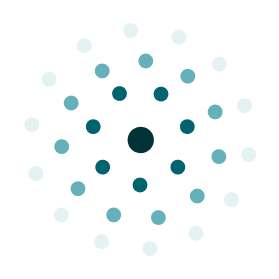What happens when recruiter instinct meets machine intelligence?
You get AI recruitment, not just another HR tech buzzword, but a complete shift in how hiring gets done.
Today’s job market doesn’t wait. Top candidates ghost in 3 days. Hiring managers want offers out yesterday. And recruiters? They’re buried under resumes, no-shows, and scheduling hell.
That’s why more teams are turning to AI, not to replace humans, but to finally give them breathing room. Done right, AI recruitment means your first screen happens before your coffee’s cold. Your shortlists are built while you sleep. And your best-fit candidates? Already engaged before your competition catches up.
At Senseloaf, we’ve worked closely with recruiters, hiring managers, and HR leaders across industries to design systems that solve real hiring bottlenecks. And through those conversations, one thing became clear: AI is not about replacement. It’s about reinforcement.
That’s why we created this guide, to cut through the hype, demystify the tech, and show how teams are using AI to get measurable results.
In this deep dive, you’ll learn:
- What AI recruiting really means (hint: it's not just chatbots and resume filters)
- How it adds value at every stage, from sourcing to screening to post-hire
- What tools, terms, and tactics to watch for
- What pitfalls to avoid as you scale AI in your hiring stack
- And how to build a hiring engine that blends human strategy with machine speed
Because the benefits of AI recruitment aren’t just about efficiency. They’re about transforming how hiring teams work, think, and win.
What is AI Recruiting?
AI recruiting is the use of artificial intelligence technologies to streamline, support, and enhance the hiring process. But unlike older recruitment tech that simply automates repetitive tasks, AI recruiting goes a step further — it brings reasoning, adaptability, and intelligence into talent operations.
Let’s break that down.
At its core, AI recruiting leverages tools like:
- Natural Language Processing (NLP) to read and understand resumes or job descriptions
- Machine Learning to recognize patterns in past hiring decisions and outcomes
- Predictive Analytics to forecast which candidates are most likely to succeed
- Generative AI (GenAI) to generate job descriptions, interview questions, or even personalized candidate messaging
But the real game-changer? These tools are no longer siloed. They're embedded across the entire hiring funnel, and in some cases, making decisions autonomously based on goals, context, and recruiter feedback.
Instead of just automating a task, AI recruiting systems now orchestrate processes: from resume matching to pre-screening, interviews, and even post-hire workflows.
AI vs. Traditional Automation: What's the Difference?
Traditional recruitment software automates static workflows:
- Rule-based filters for screening
- Pre-written follow-up emails
- Manual scheduling templates
AI recruiting is dynamic:
- It adapts based on recruiter behavior, market data, and hiring outcomes
- It suggests improvements over time — not just executes instructions
- It learns from every interaction, adjusting strategies as roles and requirements shift
Examples of AI in Recruitment Software
Today’s AI recruitment software often includes:
- AI Resume Screening: Scans resumes for context, not just keywords
- AI-Powered Candidate Sourcing: Searches internal and external talent pools simultaneously
- Conversational AI Tools: Handle screening chats, FAQs, and interview coordination
- Video Interviewing Platforms: Analyze tone, content, and behavior for better candidate insights
- AI for HR: Extends beyond hiring into onboarding, retention prediction, and workforce planning
Benefits and Challenges of AI in Recruitment
AI in recruitment isn’t just a shiny new tool. It’s a strategic lever. When implemented thoughtfully, it reduces hiring friction, improves outcomes, and gives recruiting teams the time and insights to focus on what matters: building strong, scalable talent pipelines.
But like any innovation, it comes with both advantages and risks.
Let’s break down the real-world benefits, and where teams need to tread carefully.
Benefits of AI Recruitment
1. Speed That Matches the Market
Today’s hiring cycle moves fast. According to SHRM, top candidates are off the market in 10 days, but the average time-to-hire is 36 days. That gap is where good talent gets lost.
AI shortens the cycle by:
- Instantly shortlisting resumes based on match quality
- Auto-scheduling interviews around availability
- Pre-screening candidates 24/7 through conversational AI
2. Scalability Without Burnout
Need to screen 500 applicants by Friday? AI doesn’t blink. Tools like AI resume screening and sourcing agents can handle thousands of profiles, all with consistency and zero fatigue.
Whether you're ramping up seasonal hiring or expanding globally, AI helps you scale without scaling your headcount.
3. Improved Quality of Hire
By analyzing not just keywords but context, like tenure, project fit, and role progression, AI matches candidates who are more likely to succeed and stay.
Companies using AI-powered recruiting report 82% improvement in quality of hires, with stronger correlations between AI assessments and on‑the‑job performance
4. Better Candidate Experience
With AI chatbots and automated touchpoints, candidates get:
- Immediate responses
- Personalized updates
- Consistent communication
That matters. 52% of job seekers decline offers due to poor communication. AI keeps candidates informed and engaged, even outside office hours.
5. Smarter Decisions, Backed by Data
AI surfaces insights recruiters might miss:
- Drop-off trends
- Bottlenecks in the funnel
- Engagement patterns by role
It’s not just faster, it’s more strategic. Hiring becomes a business decision, not guesswork.
Challenges and Risks of AI in Hiring
AI can be powerful, but if misused, it can introduce new risks. Here's what to watch for:
1. Algorithmic Bias
AI learns from historical data. If that data is biased, favoring certain schools, regions, or profiles, the AI might replicate or even amplify those biases.
A Harvard Business Review study found that biased algorithms can reduce candidate diversity by up to 30% if left unchecked.
What to do: Use systems that explain their logic, and allow recruiters to review and override AI-driven scores.
2. Lack of Explainability
Some AI tools are black boxes, they make decisions, but don’t tell you why. That’s a compliance and trust issue.
Ethical recruitment AI, like Senseloaf’s, includes transparent scoring, match reports, and recruiter-side controls so teams stay in command.
3. Overreliance on Automation
AI supports, not replaces, human judgment. Over-automating early stages (like resume filtering) without human review can cause great candidates to slip through the cracks.
Solution: Use AI for speed, but maintain human-in-the-loop reviews for fairness, especially in final decisions.
Related Read: Is Recruitment Automation Right for You?
The Role of AI Across the Hiring Funnel
When most people think of AI in hiring, they picture resume screening or chatbot interviews. But the reality is much broader, and far more transformative.
AI is redefining talent acquisition from the first click to the final offer. At every stage of the funnel, intelligent systems now perform, adapt, and optimize tasks that used to drain hours from talent teams.
Let’s walk through what modern AI in talent acquisition looks like, and how it’s reshaping the entire hiring journey.
1. Sourcing: Going Beyond Job Boards
In traditional recruiting, sourcing was largely manual: posting on job boards, searching LinkedIn, sifting through resumes. But AI has turned sourcing into a proactive, always-on engine.
AI-powered candidate sourcing can:
- Scan internal databases for past applicants and silver medalists
- Parse public profiles and talent platforms to identify passive candidates
- Enrich profiles by pulling skill data from GitHub, Behance, or academic papers
- Recommend outreach strategies based on candidate behavior patterns
2. Screening: From Filtering to Understanding
Old-school screening relied on rigid filters: years of experience, degree, location. AI screening flips that model. It evaluates candidates contextually, scoring resumes not just on keywords, but on relevance, recency, skill depth, and role alignment.
AI resume screening agents can:
- Parse resumes semantically (not just keyword matching)
- Auto-score candidates on multiple dimensions
- Flag red flags like job-hopping or career gaps (and offer rationale)
- Automatically route top matches into the next funnel stage
Example: Senseloaf’s AI Candidate Matching Agent analyzes job descriptions and hiring patterns to surface top-fit candidates in minutes, reducing manual review by 90% and improving shortlist quality significantly.
3. Pre-Screening Interviews: Fast, Conversational, Scalable
First-round screens used to take days to coordinate. Now? They happen on autopilot.
Conversational AI agents handle asynchronous pre-screening via chat or voice:
- Generate role-specific questions using job description context
- Assess candidate responses in real time
- Apply knockout criteria while capturing structured insights
- Route qualified candidates forward, or provide instant, respectful rejection
4. Interviews: Smarter Questions, Deeper Signals
AI isn’t just coordinating interviews, it’s conducting them. Today’s systems can run structured or adaptive interviews that adjust in real time, creating a more dynamic and insight-rich candidate experience.
AI interview tools now:
- Generate role-specific questions directly from the job description
- Evolve the conversation based on candidate responses
- Score answers instantly using context-aware evaluation models
- Surface key indicators like depth of knowledge, confidence, and growth potential
5. Assessments and Offers: Context Meets Conversion
AI can now support:
- Skill-based assessments with automated scoring
- Cultural fit modeling based on team traits
- Offer recommendation engines that benchmark compensation
- Predictive analytics to forecast candidate likelihood to accept or churn
The AI Funnel vs. the Traditional Funnel
AI Recruiting Tools: What to Look For
The rise of automated recruiting tools has shifted recruitment from a reactive function to a streamlined, insight-driven process. But with so many tools flooding the market, how do you know what actually moves the needle?
Let’s start with the basics.
What Are AI Recruiting Tools?
AI recruiting tools refer to software solutions that use artificial intelligence, rules-based workflows, or machine learning to reduce manual hiring tasks. These tools can:
- Scan resumes and rank candidates
- Trigger follow-up emails or interview scheduling
- Conduct pre-screening conversations
- Sync data between platforms
They live across different layers of the tech stack:
- Within ATS systems as plugins or extensions
- Embedded in CRM platforms for candidate nurturing
- Packaged as standalone solutions for specific stages (e.g., interview automation, sourcing)
But not all automation is created equal. Many tools still rely on rigid logic or require heavy setup, while others adapt in real time, share context across stages, and operate in sync.
What Makes a Recruiting Tool Truly Intelligent?
Some of the most effective platforms today go beyond task automation. They act as an orchestration layer, coordinating multiple AI agents that specialize in sourcing, matching, screening, or interviewing, each learning from previous outcomes.
Look for tools that offer:
- Contextual learning: Systems that update logic based on recruiter feedback or historical hiring data
- Role-specific workflows: Automation that adjusts based on function, level, or industry
- Cross-agent coordination: Tools that don’t work in silos but share signals across each step of the funnel
These capabilities reduce fragmentation and create a seamless experience for both candidates and recruiters, similar to how a recruiter would operate if they had unlimited time and data access.
Key Evaluation Criteria for Automated Recruiting Tools
When choosing automated tools, these are the key factors to assess:
1. Data Privacy & Compliance
With AI in the mix, privacy matters more than ever. Look for systems that:
- Adhere to local data regulations (GDPR, CCPA, etc.)
- Offer candidate opt-ins and explainability features
- Provide full visibility into how data is stored, used, and scored
Responsible AI design should include guardrails, bias detection, and human review checkpoints, especially in high-stakes decisions.
2. Transparency & Explainability
Avoid tools that act as black boxes. The best systems:
- Show how candidates are scored (and why)
- Offer rationales and audit trails for AI decisions
- Allow recruiters to fine-tune or override logic as needed
For example, AI recruitment platforms like Senseloaf don’t just rate candidates, they explain why someone is a top fit, highlighting skills, experience, and resume context that align with the role.
3. ATS & Workflow Integration
No team wants another standalone tool. Seamless integration with your ATS or HRIS is a must, whether through marketplace connectors, APIs, or middleware.
Look for platforms that:
- Sync stages and candidate data bi-directionally
- Auto-tag profiles with screening insights or match scores
- Let recruiters trigger or edit workflows within existing systems
4. Customization Without Complexity
Recruiting teams shouldn’t have to write rules or configure logic trees. Choose tools that:
- Accept plain-language prompts to adjust filters or scoring
- Learn and adapt from recruiter preferences
- Allow modular control over each automation step
The best tools amplify human strategy, not constrain it with static workflows.
Is AI Replacing Recruiters? Or Empowering Them?
The fear that AI will replace recruiters is understandable, but largely misplaced. What’s actually happening is a shift from manual execution to strategic enablement.
AI tools are taking over the repetitive, time-consuming tasks like resume parsing, scheduling interviews, and sending follow-ups, giving recruiters the freedom to focus on what they do best: building relationships, advising hiring managers, and shaping workforce strategy.
Modern recruiting platforms are designed with humans in the loop. Recruiters define the strategy, what good looks like, which signals to prioritize, and the AI executes based on that guidance. When needed, recruiters can adjust scoring, override decisions, or provide feedback that improves future recommendations.
In this model, AI doesn’t replace judgment, it enhances it. It’s not a threat to the role of the recruiter. It’s a catalyst for making that role more impactful.
Conclusion: The Future is Hybrid
AI isn’t the future of recruiting, it’s the present. But the winning teams aren’t replacing people with machines. They’re building systems where human expertise leads, and AI accelerates every step.
The most impactful recruiting strategies today are hybrid by design. They combine recruiter instinct with intelligent automation, letting each do what they do best. Recruiters guide the process, define quality, and build trust. AI brings speed, consistency, and insight, working behind the scenes to streamline workflows and surface the right candidates at the right time.
Platforms like Senseloaf are already enabling this shift. With modular agents that handle everything from resume matching to interviewing, SIA (Senseloaf Intelligent Automation) gives recruiters the tools to stay ahead, without losing control. It’s not about doing more with less. It’s about hiring smarter with what you already have.
The future belongs to those who can move fast and think long term. With the right AI partner, that balance isn’t just possible, it’s the new standard.

.jpg)





